YTTRIUM BARIUM COPPER OXIDE
- CAS NO.:107539-20-8
- Empirical Formula: BaCuH4OY
- Molecular Weight: 309.81
- MDL number: MFCD00213924
- EINECS: 619-720-7
- SAFETY DATA SHEET (SDS)
- Update Date: 2023-04-23 13:52:06

What is YTTRIUM BARIUM COPPER OXIDE?
Description
Yttrium barium copper oxide (YBCO) is a crystalline compound with important property of high temperature superconductor above the boiling point (77 K) of liquid nitrogen. YBCO is sensitive to air and moisture. Exposures to YBCO have been reported to cause skin irritation, serious eye irritation, and respiratory irritation. Symptoms of systemic copper poisoning may include capillary damage, headache, cold sweat, weak pulse, kidney and liver damage, central nervous system excitation followed by depression, jaundice, convulsions, paralysis, and coma. Death may occur from shock or renal failure. Chronic copper poisoning is typified by hepatic cirrhosis, brain damage and demyelination, kidney defects, and copper deposition in the cornea as exemplified by humans with Wilson s disease. It has also been reported that copper poisoning has led to haemolytic anaemia and accelerates arteriosclerosis.
Chemical properties
orthorhombic; superconductor; 0.2μm powder(s); wet processed from 99.999% nitrates; a hard grayish black sintered material prepared by reacting carbonate and hydroxide free Y2O3 with stoichoimetric amounts of BaCO3 and CuO in air at 950°C for 12h; sensitive to atmospheric CO2 and H2O; a=0.3835nm, b=0.3884nm, c=1.1681nm; transition temp, Tc, is 92K; for YBa2Cu3.5O7.5, Tc is 94 Κ[STR93] [CON87] [CEN92] [ASM93] [ALF93]
Properties of YTTRIUM BARIUM COPPER OXIDE
| form | powder |
Safety information for YTTRIUM BARIUM COPPER OXIDE
| Signal word | Warning |
| Pictogram(s) |
 Exclamation Mark Irritant GHS07 |
| GHS Hazard Statements |
H315:Skin corrosion/irritation H319:Serious eye damage/eye irritation H335:Specific target organ toxicity, single exposure;Respiratory tract irritation |
| Precautionary Statement Codes |
P261:Avoid breathing dust/fume/gas/mist/vapours/spray. P264:Wash hands thoroughly after handling. P264:Wash skin thouroughly after handling. P271:Use only outdoors or in a well-ventilated area. P280:Wear protective gloves/protective clothing/eye protection/face protection. P302+P352:IF ON SKIN: wash with plenty of soap and water. P305+P351+P338:IF IN EYES: Rinse cautiously with water for several minutes. Remove contact lenses, if present and easy to do. Continuerinsing. |
Computed Descriptors for YTTRIUM BARIUM COPPER OXIDE
New Products
4-AMINO-TETRAHYDRO-PYRAN-4-CARBOXYLIC ACID HCL 4-(Dimethylamino)tetrahydro-2H-pyran-4-carbonitrile 4-Aminotetrahydropyran-4-carbonitrile Hydrochloride (R)-3-Aminobutanenitrile Hydrochloride 3-((Dimethylamino)methyl)-5-methylhexan-2-one oxalate 1,4-Dioxa-8-azaspiro[4.5]decane 5-Bromo-2-nitropyridine Nimesulide BP Aceclofenac IP/BP/EP Diclofenac Sodium IP/BP/EP/USP Mefenamic Acid IP/BP/EP/USP Ornidazole IP Diclofenac Potassium THOMAIND PAPER PH 2.0 TO 4.5 1 BOX BUFFER CAPSULE PH 9.2 - 10 CAP SODIUM CHLORIDE 0.1N CVS ALLOXAN MONOHYDRATE 98% PLATINUM 0.5% ON 3 MM ALUMINA PELLETS (TYPE 73) LITHIUM AAS SOLUTION 2-Bromo-1-(bromomethyl)-3-chloro-5-nitrobenzene 2-Bromo-3-nitroaniline N-(3-Hydroxypropyl)-N-methylacetamide 3-Bromo-6-chloropyridazine 4-ethyl-3-nitrobenzoic acidRelated products of tetrahydrofuran
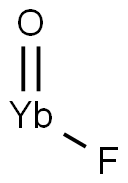
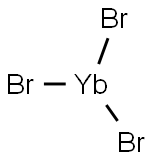
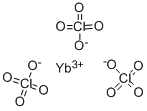
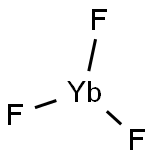

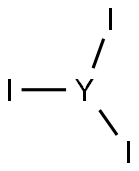


You may like
-
 Yttrium barium copper oxide, 99.9% CAS 107539-20-8View Details
Yttrium barium copper oxide, 99.9% CAS 107539-20-8View Details
107539-20-8 -
 Yttrium barium copper oxide CAS 107539-20-8View Details
Yttrium barium copper oxide CAS 107539-20-8View Details
107539-20-8 -
 Yttrium barium copper oxide CAS 107539-20-8View Details
Yttrium barium copper oxide CAS 107539-20-8View Details
107539-20-8 -
 1823368-42-8 98%View Details
1823368-42-8 98%View Details
1823368-42-8 -
 2-(3-(tert-butyl)phenoxy)-2-methylpropanoic acid 1307449-08-6 98%View Details
2-(3-(tert-butyl)phenoxy)-2-methylpropanoic acid 1307449-08-6 98%View Details
1307449-08-6 -
 Ethyl 3-(furan-2-yl)-3-hydroxypropanoate 25408-95-1 98%View Details
Ethyl 3-(furan-2-yl)-3-hydroxypropanoate 25408-95-1 98%View Details
25408-95-1 -
 2-Chloro-5-fluoro-1-methoxy-3-methylbenzene 98%View Details
2-Chloro-5-fluoro-1-methoxy-3-methylbenzene 98%View Details
1805639-70-6 -
 Lithium ClavulanateView Details
Lithium ClavulanateView Details
61177-44-4